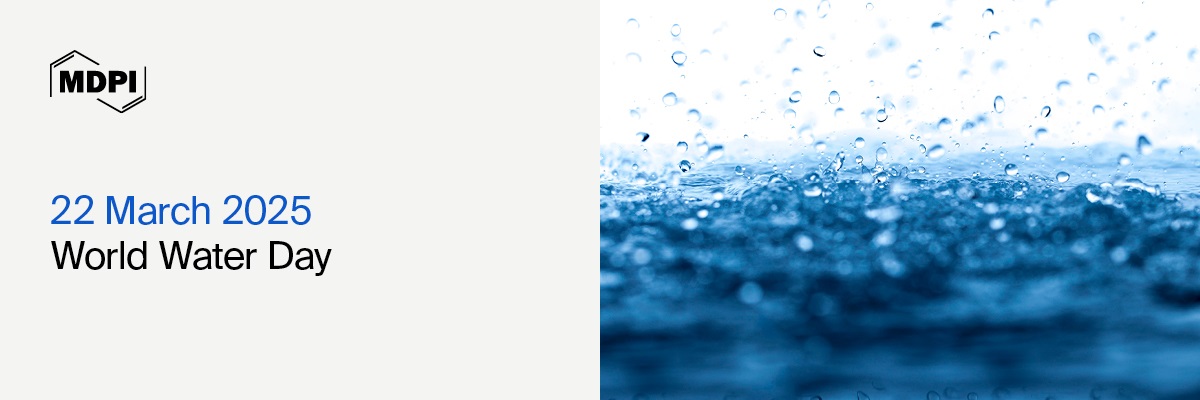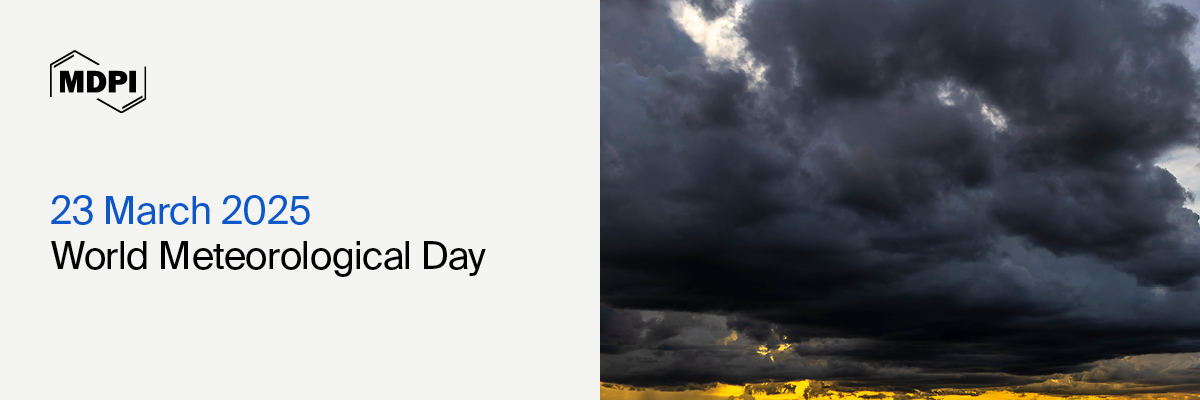Journal Description
Journal of Marine Science and Engineering
Journal of Marine Science and Engineering
is an international, peer-reviewed, open access journal on marine science and engineering, published monthly online by MDPI. The Australia New Zealand Marine Biotechnology Society (ANZMBS) is affiliated with JMSE and their members receive discounts on the article processing charges.
- Open Access— free for readers, with article processing charges (APC) paid by authors or their institutions.
- High Visibility: indexed with Scopus, SCIE (Web of Science), GeoRef, Inspec, AGRIS, and other databases.
- Journal Rank: JCR - Q1 (Engineering, Marine) / CiteScore - Q2 (Civil and Structural Engineering)
- Rapid Publication: manuscripts are peer-reviewed and a first decision is provided to authors approximately 16.4 days after submission; acceptance to publication is undertaken in 2.6 days (median values for papers published in this journal in the second half of 2024).
- Recognition of Reviewers: reviewers who provide timely, thorough peer-review reports receive vouchers entitling them to a discount on the APC of their next publication in any MDPI journal, in appreciation of the work done.
Impact Factor:
2.7 (2023);
5-Year Impact Factor:
2.8 (2023)
Latest Articles
Parallel Net: Frequency-Decoupled Neural Network for DOA Estimation in Underwater Acoustic Detection
J. Mar. Sci. Eng. 2025, 13(4), 724; https://doi.org/10.3390/jmse13040724 (registering DOI) - 4 Apr 2025
Abstract
Under wideband interference conditions, traditional neural networks often suffer from low accuracy in single-frequency direction-of-arrival (DOA) estimation and face challenges in detecting single-frequency sound sources. To address this limitation, we propose a novel model called Parallel Net. The architecture adopts a frequency-parallel
[...] Read more.
Under wideband interference conditions, traditional neural networks often suffer from low accuracy in single-frequency direction-of-arrival (DOA) estimation and face challenges in detecting single-frequency sound sources. To address this limitation, we propose a novel model called Parallel Net. The architecture adopts a frequency-parallel design: it first employs a recurrent neural network, the generalized feedback gated recurrent unit (GFGRU), to independently extract features from each frequency component, and then it fuses these features through an attention mechanism. This design significantly enhances the network’s capability in estimating the DOA of single-frequency signals. The simulation results demonstrate that when the signal-to-noise ratio (SNR) exceeds −10 dB, Parallel Net achieves a mean absolute error (MAE) below 2°, outperforming traditional frequency-coherent neural networks and the MUSIC algorithm, and reduces the error to half that of classical beamforming (CBF). Further validation on the SWellEx-96 experiment confirms the model’s effectiveness in detecting single-frequency sources under wideband interference. Parallel Net exhibits superior sidelobe suppression and fewer spurious peaks compared to CBF, achieves higher accuracy than MUSIC, and produces smoother and more continuous DOA trajectories than conventional neural network models.
Full article
(This article belongs to the Topic Advances in Underwater Acoustics and Aeroacoustics)
►
Show Figures
Open AccessArticle
Dynamic Analysis of Subsea Sediment Engineering Properties Based on Long-Term In Situ Observations in the Offshore Area of Qingdao
by
Zhiwen Sun, Yanlong Li, Nengyou Wu, Zhihan Fan, Kai Li, Zhongqiang Sun, Xiaoshuai Song, Liang Xue and Yonggang Jia
J. Mar. Sci. Eng. 2025, 13(4), 723; https://doi.org/10.3390/jmse13040723 (registering DOI) - 4 Apr 2025
Abstract
The drastic changes in the marine environment can induce the instability of seabed sediments, threatening the safety of marine engineering facilities such as offshore oil platforms, oil pipelines, and submarine optical cables. Due to the lack of long-term in situ observation equipment for
[...] Read more.
The drastic changes in the marine environment can induce the instability of seabed sediments, threatening the safety of marine engineering facilities such as offshore oil platforms, oil pipelines, and submarine optical cables. Due to the lack of long-term in situ observation equipment for the engineering properties of seabed sediments, most existing studies have focused on phenomena such as the erosion suspension of the seabed boundary layer and wave-induced liquefaction, leading to insufficient understanding of the dynamic processes affecting the seabed environment. In this study, a long-term in situ observation system for subsea engineering geological environments was developed and deployed for 36 days of continuous monitoring in the offshore area of Qingdao. It was found that wave action significantly altered sediment mechanical properties, with a 5% sound velocity increase correlating to 39% lower compression, 7% higher cohesion, 11% greater internal friction angle, and 50% reduced excess pore water pressure at 1.0–1.8 m depth. suggesting sustained 2.2 m wave loads of expelled pore water, driving dynamic mechanical property variations in seabed sediments. This long-term in situ observation lays the foundation for the monitoring and early warning of marine engineering geological disasters.
Full article
(This article belongs to the Special Issue Advances in Marine Gas Hydrate Exploration and Discovery—2nd Edition)
►▼
Show Figures

Figure 1
Open AccessArticle
A Multi-Spatial-Scale Ocean Sound Speed Profile Prediction Model Based on a Spatio-Temporal Attention Mechanism
by
Shuwen Wang, Ziyin Wu, Shuaidong Jia, Dineng Zhao, Jihong Shang, Mingwei Wang, Jieqiong Zhou and Xiaoming Qin
J. Mar. Sci. Eng. 2025, 13(4), 722; https://doi.org/10.3390/jmse13040722 (registering DOI) - 3 Apr 2025
Abstract
Marine researchers rely heavily on ocean sound velocity, a crucial hydroacoustic environmental metric that exhibits large geographical and temporal changes. Nowadays, spatio-temporal series prediction algorithms are emerging, but their prediction accuracy requires improvement. Moreover, in terms of ocean sound speed, most of these
[...] Read more.
Marine researchers rely heavily on ocean sound velocity, a crucial hydroacoustic environmental metric that exhibits large geographical and temporal changes. Nowadays, spatio-temporal series prediction algorithms are emerging, but their prediction accuracy requires improvement. Moreover, in terms of ocean sound speed, most of these models predict an ocean sound speed profile (SSP) at a single coordinate position, and only a few predict multi-spatial-scale SSPs. Hence, this paper proposes a new data-driven method called STA-Conv-LSTM that combines convolutional long short-term memory (Conv-LSTM) and spatio-temporal attention (STA) to predict SSPs. We used a 234-month dataset of monthly mean sound speeds in the eastern Pacific Ocean from January 2004 to June 2023 to train the prediction model. We found that using 24 months of SSPs as the inputs to predict the SSPs of the following month yielded the highest accuracy. The results demonstrate that STA-Conv-LSTM can achieve predictions with an accuracy of more than 95% for both single-point and three-dimensional scenarios. We compared it against recurrent neural network, LSTM, and Conv-LSTM models with optimal parameter settings to demonstrate the model’s superiority. With a fitting accuracy of 95.12% and the lowest root-mean-squared error of 0.8978, STA-Conv-LSTM clearly outperformed the competition with respect to prediction accuracy and stability. This model not only predicts SSPs well but also will improve the spatial and temporal forecasts of other marine environmental factors.
Full article
(This article belongs to the Special Issue Underwater Acoustic Field Modulation Technology)
Open AccessReview
Research Progress of Fuel Cell Technology in Marine Applications: A Review
by
Zheng Zhang, Xiangxiang Zheng, Daan Cui, Min Yang, Mojie Cheng and Yulong Ji
J. Mar. Sci. Eng. 2025, 13(4), 721; https://doi.org/10.3390/jmse13040721 (registering DOI) - 3 Apr 2025
Abstract
With the increasing severity of global environmental issues and the pressure from the strict pollutant emission regulations proposed by the International Maritime Organization (IMO), the shipping industry is seeking new types of marine power systems that can replace traditional propulsion systems. Marine fuel
[...] Read more.
With the increasing severity of global environmental issues and the pressure from the strict pollutant emission regulations proposed by the International Maritime Organization (IMO), the shipping industry is seeking new types of marine power systems that can replace traditional propulsion systems. Marine fuel cells, as an emerging energy technology, only emit water vapor or a small amount of carbon dioxide during operation, and have received widespread attention in recent years. However, research on their application in the shipping industry is relatively limited. Therefore, this paper collects relevant reports and literature on the use of fuel cells on ships over the past few decades, and conducts a thorough study of typical fuel cell-powered vessels. It summarizes and proposes current design schemes and optimization measures for marine fuel cell power systems, providing directions for further improving battery performance, reducing carbon emissions, and minimizing environmental pollution. Additionally, this paper compares and analyzes marine fuel cells with those used in automotive, aviation, and locomotive applications, offering insights and guidance for the development of marine fuel cells. Although hydrogen fuel cell technology has made significant progress in recent years, issues still exist regarding hydrogen production, storage, and related safety and standardization concerns. In terms of comprehensive performance and economics, it still cannot effectively compete with traditional internal combustion engines. However, with the continued rapid development of fuel cell technology, marine fuel cells are expected to become a key driver for promoting green shipping and achieving carbon neutrality goals.
Full article
(This article belongs to the Special Issue Marine Fuel Cell Technology: Latest Advances and Prospects)
Open AccessArticle
A New Energy Management Strategy Supported by Reinforcement Learning: A Case Study of a Multi-Energy Cruise Ship
by
Xiaodong Guo, Daogui Tang, Yupeng Yuan, Chengqing Yuan, Boyang Shen and Josep M. Guerrero
J. Mar. Sci. Eng. 2025, 13(4), 720; https://doi.org/10.3390/jmse13040720 (registering DOI) - 3 Apr 2025
Abstract
Hybrid ships offer significant advantages in energy efficiency and environmental sustainability. However, their complex structures present challenges in developing effective energy management strategies to ensure optimal power distribution and stable, efficient operation of the power system. This study establishes a mathematical model of
[...] Read more.
Hybrid ships offer significant advantages in energy efficiency and environmental sustainability. However, their complex structures present challenges in developing effective energy management strategies to ensure optimal power distribution and stable, efficient operation of the power system. This study establishes a mathematical model of a hybrid system for a specific ship and proposes an energy management strategy based on the deep deterministic policy gradient (DDPG) algorithm, a reinforcement learning technique. The proposed strategy’s feasibility and effectiveness are validated through comparisons with alternative energy management strategies and real-world ship data. Simulation results demonstrate that the DDPG-based strategy optimizes the diesel engine’s operating conditions and reduces total fuel consumption by 3.6% compared to a strategy based on the deep Q-network (DQN) algorithm.
Full article
(This article belongs to the Section Ocean Engineering)
Open AccessReview
Current Status of Bibliometrics-Based Research on Measurement and Communication Technology for Space Tracking Ships
by
Haoyu Jiang, Yunsheng Ma, Shengqing Zeng, Yutao Tian and Dapeng Zhang
J. Mar. Sci. Eng. 2025, 13(4), 719; https://doi.org/10.3390/jmse13040719 (registering DOI) - 3 Apr 2025
Abstract
Space tracking ships are critical assets in modern space exploration, overcoming the limitations of land-based tracking systems by providing real-time telemetry, trajectory monitoring, and communication support for satellites and spacecraft. However, the existing literature offers limited insights into the historical development, technological evolution,
[...] Read more.
Space tracking ships are critical assets in modern space exploration, overcoming the limitations of land-based tracking systems by providing real-time telemetry, trajectory monitoring, and communication support for satellites and spacecraft. However, the existing literature offers limited insights into the historical development, technological evolution, and collaborative research trends of these specialized vessels. This study employs a bibliometric analysis using CiteSpace (6.3.R1) to identify research trends, highlight key technological advancements, and assess international collaboration. By analyzing publications from major contributors, including the United States, the former Soviet Union, France, and China, the paper reveals technological innovations such as advancements in measurement systems, communication technologies, and the integration of artificial intelligence (AI) for enhanced tracking precision. Structural and operational analyses emphasize the importance of design factors, including ship dimensions and internal systems, for ensuring optimal performance in challenging maritime environments. The findings highlight evolving technological priorities and persistent gaps in international collaboration, suggesting opportunities for global partnerships to advance the field. This study bridges historical and technical gaps, providing valuable insights for enhancing the efficiency and strategic relevance of space tracking ships in future space exploration missions.
Full article
(This article belongs to the Special Issue Advanced Research in Shipping Informatics and Communications—2nd Edition)
Open AccessArticle
A Novel Reactive Power Sharing Control Strategy for Shipboard Microgrids Based on Deep Reinforcement Learning
by
Wangyang Li, Hong Zhao, Jingwei Zhu and Tiankai Yang
J. Mar. Sci. Eng. 2025, 13(4), 718; https://doi.org/10.3390/jmse13040718 (registering DOI) - 3 Apr 2025
Abstract
Reactive power sharing in distributed generators (DGs) is one of the key issues in the control technologies of greenship microgrids. Reactive power imbalance in ship microgrids can cause instability and potential equipment damage. In order to improve the poor performance of the traditional
[...] Read more.
Reactive power sharing in distributed generators (DGs) is one of the key issues in the control technologies of greenship microgrids. Reactive power imbalance in ship microgrids can cause instability and potential equipment damage. In order to improve the poor performance of the traditional adaptive droop control methods used in microgrids under high-load conditions and influenced by virtual impedance parameters, this paper proposes a novel strategy based on the deep reinforcement learning DQN-VI, in which a deep Q network (DQN) is combined with the virtual impedance (VI) method. Unlike traditional methods which may use static or heuristically adjusted VI parameters, the DQN-VI strategy employs deep reinforcement learning to dynamically optimize these parameters, enhancing the microgrid’s performance under varying conditions. The proposed DQN-VI strategy considers the current situation in greenships, wherein microgrids are generally equipped with cables of different lengths and measuring the impedance of each cable is challenging due to the lack of space. By modeling the control process as a Markov decision process, the observation space, action space, and reward function are designed. In addition, a deep neural network is used to estimate the Q function that describes the relationship between the state and the action. During the training of the DQN agent, the process is optimized step-by-step by observing the state and rewards of the system, thereby effectively improving the performance of the microgrids. The comparative simulation experiments verify the effectiveness and superiority of the proposed strategy.
Full article
(This article belongs to the Special Issue Optimization and Control of Marine Renewable Energy Systems)
►▼
Show Figures
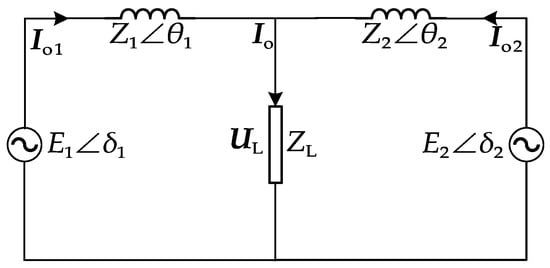
Figure 1
Open AccessArticle
Surface Current Observations in the Southeastern Tropical Indian Ocean Using Drifters
by
Prescilla Siji and Charitha Pattiaratchi
J. Mar. Sci. Eng. 2025, 13(4), 717; https://doi.org/10.3390/jmse13040717 (registering DOI) - 3 Apr 2025
Abstract
The Southeastern Tropical Indian Ocean (SETIO) forms part of the global ocean conveyor belt and thermohaline circulation that has a significant influence in controlling the global climate. This region of the ocean has very few observations using surface drifters, and this study presents,
[...] Read more.
The Southeastern Tropical Indian Ocean (SETIO) forms part of the global ocean conveyor belt and thermohaline circulation that has a significant influence in controlling the global climate. This region of the ocean has very few observations using surface drifters, and this study presents, for the first time, paths of satellite tracked drifters released in the Timor Sea (123.3° E, 13.8° S). The drifter data were used to identify the ocean dynamics, forcing mechanisms and connectivity in the SETIO region. The data set has high temporal (~5 min) and spatial (~120 m) resolution and were collected over an 8-month period between 17 September 2020 and 25 May 2021. At the end of 250 days, drifters covered a region separated by ~8000 km (83–137° E, 4–21° S) and transited through several forcing mechanisms including semidiurnal and diurnal tides, submesoscale and mesoscale eddies, channel and headland flows, and inertial currents generated by tropical storms. Initially, all the drifters moved as a single cluster, and at 120° E longitude they entered a region of high eddy kinetic energy defined here as the ‘SETIO Mixing Zone’ (SMZ), and their movement was highly variable. All the drifters remained within the SMZ for periods between 3 and 5 months. Exiting the SMZ, drifters followed the major ocean currents in the system (either South Java or South Equatorial Current). Two of the drifters moved north through Lombok and Sape Straits and travelled to the east as far as Aru Islands. The results of this study have many implications for connectivity and transport of buoyant materials (e.g., plastics), as numerical models do not have the ability to resolve many of the fine-scale physical processes that contribute to surface transport and mixing in the ocean.
Full article
(This article belongs to the Special Issue Monitoring of Ocean Surface Currents and Circulation)
►▼
Show Figures

Figure 1
Open AccessArticle
Merging Multiple System Perspectives: The Key to Effective Inland Shipping Emission-Reduction Policy Design
by
Solange van der Werff, Fedor Baart and Mark van Koningsveld
J. Mar. Sci. Eng. 2025, 13(4), 716; https://doi.org/10.3390/jmse13040716 (registering DOI) - 3 Apr 2025
Abstract
Policymakers in the maritime sector face the challenge of designing and implementing decarbonization policies while maintaining safe navigation. Herein, the inland sector serves as a promising stepping stone due to the possibility of creating a dense energy supply infrastructure and shorter distances compared
[...] Read more.
Policymakers in the maritime sector face the challenge of designing and implementing decarbonization policies while maintaining safe navigation. Herein, the inland sector serves as a promising stepping stone due to the possibility of creating a dense energy supply infrastructure and shorter distances compared to marine shipping. A key challenge is to consider the totality of all operational profiles as a result of the range of vessels and routes encountering varying local circumstances. In this study, we use a new scheme called “event table” to transform big data on vessel trajectories (AIS data) combined with energy-estimating algorithms into shipping-emission outcomes that can be evaluated from multiple perspectives. We can subsequently tie observations in one perspective (for example, large-scale spatial patterns on a map) to supporting explanations based on another perspective (for example, water currents, vessel speeds, or engine ages and their contributions to emissions). Hence, combining these outcomes from multiple perspectives and evaluation scales provides an essential understanding of how the system works and what the most effective improvement measures will be. With our approach, we can translate large quantities of data from multiple sources into multiple linked perspectives on the shipping system.
Full article
(This article belongs to the Special Issue Green Shipping Corridors and GHG Emissions)
►▼
Show Figures

Figure 1
Open AccessArticle
MESTR: A Multi-Task Enhanced Ship-Type Recognition Model Based on AIS
by
Nanyu Chen, Luo Chen, Xinxin Zhang and Ning Jing
J. Mar. Sci. Eng. 2025, 13(4), 715; https://doi.org/10.3390/jmse13040715 (registering DOI) - 3 Apr 2025
Abstract
With the rapid growth in maritime traffic, navigational safety has become a pressing concern. Some vessels deliberately manipulate their type information to evade regulatory oversight, either to circumvent legal sanctions or engage in illicit activities. Such practices not only undermine the accuracy of
[...] Read more.
With the rapid growth in maritime traffic, navigational safety has become a pressing concern. Some vessels deliberately manipulate their type information to evade regulatory oversight, either to circumvent legal sanctions or engage in illicit activities. Such practices not only undermine the accuracy of maritime supervision but also pose significant risks to maritime traffic management and safety. Therefore, accurately identifying vessel types is essential for effective maritime traffic regulation, combating maritime crimes, and ensuring safe maritime transportation. However, the existing methods fail to fully exploit the long-term sequential dependencies and intricate mobility patterns embedded in vessel trajectory data, leading to suboptimal identification accuracy and reliability. To address these limitations, we propose MESTR, a Multi-Task Enhanced Ship-Type Recognition model based on Automatic Identification System (AIS) data. MESTR leverages a Transformer-based deep learning framework with a motion-pattern-aware trajectory segment masking strategy. By jointly optimizing two learning tasks—trajectory segment masking prediction and ship-type prediction—MESTR effectively captures deep spatiotemporal features of various vessel types. This approach enables the accurate classification of six common vessel categories: tug, sailing, fishing, passenger, tanker, and cargo. Experimental evaluations on real-world maritime datasets demonstrate the effectiveness of MESTR, achieving an average accuracy improvement of 12.04% over the existing methods.
Full article
(This article belongs to the Section Ocean Engineering)
►▼
Show Figures

Figure 1
Open AccessArticle
Numerical Modeling of a Triangle Semi-Submersible Floating Wind Platform Under Wave–Current Flows
by
Shuai Li, Jungang Hao, Yajun Ren, Ling Zhu, Jing Yuan and Yiyong Dong
J. Mar. Sci. Eng. 2025, 13(4), 714; https://doi.org/10.3390/jmse13040714 - 3 Apr 2025
Abstract
The semi-submersible platform is a widely used structure for supporting floating offshore wind turbines (FOWTs) in deep-sea environments where waves and currents interact. Understanding the impact of wave–current interaction (WCI) on hydrodynamic loading and the resulting platform response is essential for effective platform
[...] Read more.
The semi-submersible platform is a widely used structure for supporting floating offshore wind turbines (FOWTs) in deep-sea environments where waves and currents interact. Understanding the impact of wave–current interaction (WCI) on hydrodynamic loading and the resulting platform response is essential for effective platform design. However, many existing ocean engineering software packages assume that wave and current loadings can be linearly superimposed. In this study, computational fluid dynamics (CFD) numerical simulations were performed to examine the dynamic response of a newly proposed triangle semi-submersible platform under various wave–current cases. The research underscores the significant influence of WCI on platform motion and loads, introducing nonlinearities that substantially affect both dynamic response and structural stability. Furthermore, the study reveals that WCI can mitigate vortex-induced motion (VIM), thereby enhancing platform stability by altering the force frequency, which no longer aligns with the platform’s natural frequency, thus preventing resonance. Additionally, the presence of current can intensify wave dynamics, leading to increased wave forces acting on the platform. These findings highlight the necessity of integrating WCI considerations into the design and optimization of floating wind turbine platforms to enhance their structural stability and operational performance.
Full article
(This article belongs to the Section Coastal Engineering)
►▼
Show Figures
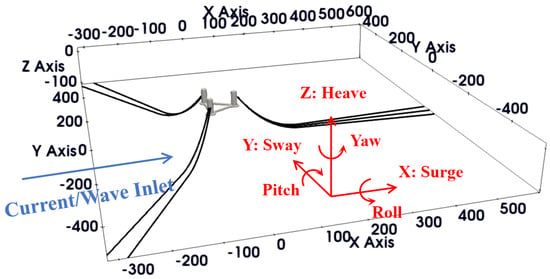
Figure 1
Open AccessArticle
Baseline Assessment of Black Sea Food Web Integrity Using a Zooplankton-Based Approach Under the Marine Strategy Framework Directive
by
Elena Bisinicu and George Emanuel Harcota
J. Mar. Sci. Eng. 2025, 13(4), 713; https://doi.org/10.3390/jmse13040713 - 2 Apr 2025
Abstract
This study presents the first scientific evaluation of food web integrity in the Black Sea under the Marine Strategy Framework Directive (MSFD) Descriptor 4 (Food Webs), utilizing zooplankton indicators to assess the environmental status during the warm season (May to October) from 2018
[...] Read more.
This study presents the first scientific evaluation of food web integrity in the Black Sea under the Marine Strategy Framework Directive (MSFD) Descriptor 4 (Food Webs), utilizing zooplankton indicators to assess the environmental status during the warm season (May to October) from 2018 to 2023. The research aims to analyze trophic interactions, biodiversity patterns, and ecological stability by examining three key indicators: the Shannon–Wiener diversity index, Copepoda biomass, and Mnemiopsis leidyi biomass. The findings reveal that the Shannon–Wiener diversity index failed to achieve Good Environmental Status (GES) in any of the four Marine Reporting Units (MRUs), suggesting insufficient community diversity and potential ecological imbalances. Copepoda biomass met GES criteria only in marine and offshore waters, indicating spatial variability in copepod population stability across the Black Sea. Meanwhile, M. leidyi biomass remained within GES thresholds in all MRUs, suggesting that its population levels do not currently threaten the food web, despite its known invasive impact. This study provides critical baseline data on food web structure and dynamics in the Black Sea, offering a scientifically grounded framework for future ecological monitoring and management strategies. The results emphasize the need for targeted conservation efforts and adaptive management approaches to enhance the ecological health of the Black Sea in alignment with MSFD objectives.
Full article
(This article belongs to the Section Marine Ecology)
►▼
Show Figures
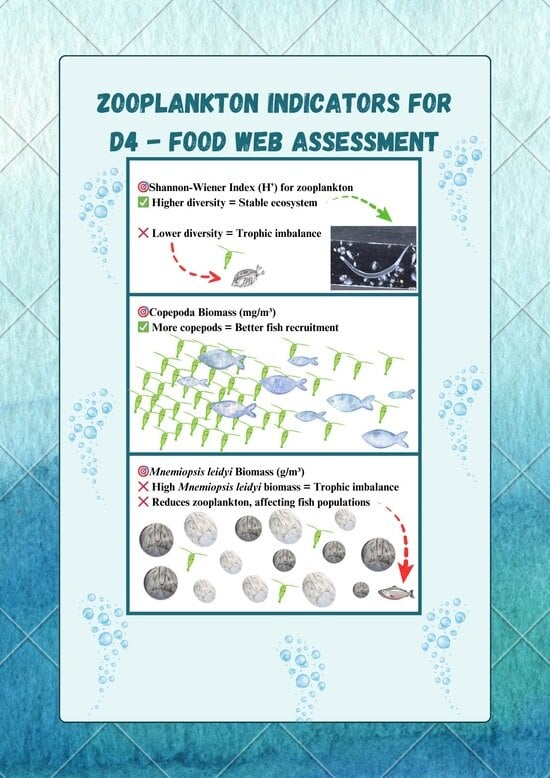
Graphical abstract
Open AccessArticle
Adaptive Sliding Mode Fault-Tolerant Tracking Control for Underactuated Unmanned Surface Vehicles
by
Weixiang Zhou, Hongying Cheng, Zihao Chen and Menglong Hua
J. Mar. Sci. Eng. 2025, 13(4), 712; https://doi.org/10.3390/jmse13040712 - 2 Apr 2025
Abstract
This article proposes an adaptive sliding mode fault-tolerant tracking control scheme for underactuated unmanned surface vehicles (USVs) that suffer from loss of effectiveness and increase in bias input when performing path tracking. First, the mathematical model and fault model of USVs are introduced.
[...] Read more.
This article proposes an adaptive sliding mode fault-tolerant tracking control scheme for underactuated unmanned surface vehicles (USVs) that suffer from loss of effectiveness and increase in bias input when performing path tracking. First, the mathematical model and fault model of USVs are introduced. Then, the USV is driven along the planned path by back-stepping and fast terminal sliding mode control. The radial basis function (RBF) neural network is used to approximate the unknown external disturbances caused by wind, waves, and currents, the unmodeled dynamics of the system, the actuator non-executed portions and bias faults. An adaptive law is designed to account for the loss of effectiveness of the thruster. In addition, through the analysis of Lyapunov stability criteria, it is proved that the proposed control method can asymptotically converge the tracking error to zero. Finally, this paper uses a simulation to demonstrate that, when a fault occurs, the tracking effect of the fault-tolerant control method proposed in this paper is almost the same as that without a fault, which proves the effectiveness of the designed adaptive law.
Full article
(This article belongs to the Section Ocean Engineering)
►▼
Show Figures
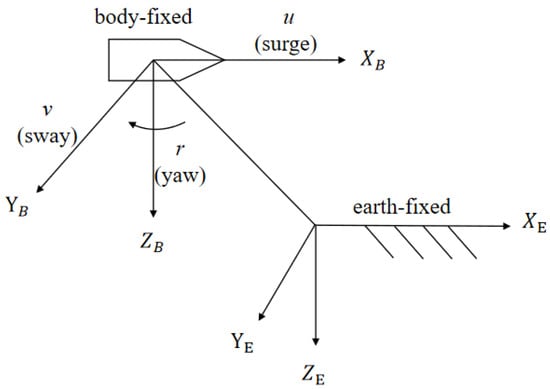
Figure 1
Open AccessArticle
CPUE Standardization and Socioeconomic Influences on Red Snow Crab (Chionoecetes japonicus) Fisheries in Korean Waters
by
Moo-Jin Kim, Heejoong Kang, Sang Chul Yoon, Ji-Hoon Choi and Hyun Woo Kim
J. Mar. Sci. Eng. 2025, 13(4), 711; https://doi.org/10.3390/jmse13040711 - 2 Apr 2025
Abstract
The standardization of catch per unit effort (CPUE) is essential for accurate stock assessment in fisheries management. This study focuses on CPUE standardization for red snow crab (Chionoecetes japonicus) in South Korea, incorporating both spatiotemporal and socioeconomic factors into a generalized
[...] Read more.
The standardization of catch per unit effort (CPUE) is essential for accurate stock assessment in fisheries management. This study focuses on CPUE standardization for red snow crab (Chionoecetes japonicus) in South Korea, incorporating both spatiotemporal and socioeconomic factors into a generalized additive model (GAM) framework. Using fishery-dependent data from 2009 to 2023, we analyzed the influence of variables such as the proportion of live catch, oil prices, global export prices, and the COVID-19 pandemic on CPUE trends. To quantify the contribution of each variable, a stepwise exclusion analysis was conducted. The results show that excluding socioeconomic variables leads to a more stable CPUE trajectory, indicating that nominal CPUE fluctuations are partially driven by economic conditions rather than changes in biological abundance. These findings highlight the importance of accounting for external drivers, particularly socioeconomic factors when standardizing CPUE. By doing so, the year effect extracted from the model can more accurately reflect relative stock abundance. The approach presented here offers a practical solution for improving CPUE estimates in data-limited fisheries and supports adaptive, evidence-based fisheries management.
Full article
(This article belongs to the Special Issue Abundance and Diversity of the Sea Fish Community)
►▼
Show Figures
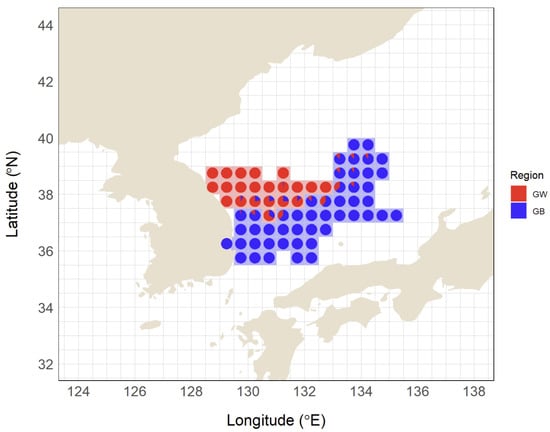
Figure 1
Open AccessArticle
Ship-To-Ship Liquefied Natural Gas Bunkering Risk Assessment by Integrating Fuzzy Failure Mode and Effect Analysis and the Technique for Order Preference by Similarity to an Ideal Solution
by
Wei Feng, Zichun Wang, Xirui Dai, Shengli Dong, Weiliang Qiao and Xiaoxue Ma
J. Mar. Sci. Eng. 2025, 13(4), 710; https://doi.org/10.3390/jmse13040710 - 2 Apr 2025
Abstract
An increasing demand can be observed in ship-to-ship (STS) liquefied natural gas (LNG) bunkering operations, and the failures involved may lead to considerable casualties or environmental damage. For this purpose, a comprehensive methodology is proposed in this study to identify and assess these
[...] Read more.
An increasing demand can be observed in ship-to-ship (STS) liquefied natural gas (LNG) bunkering operations, and the failures involved may lead to considerable casualties or environmental damage. For this purpose, a comprehensive methodology is proposed in this study to identify and assess these failure modes. In detail, the STS LNG bunkering process is first decomposed to develop a hierarchical structure according to systems-theoretic process analysis (STPA), the results of which serve to identify potential failure modes and their causes. Then, all the failure modes are evaluated by experts in terms of occurrence, severity, and detectability to develop a fuzzy confidential matrix, which is then transferred as an explicit confidential matrix to be weighted and normalized. Finally, the risk levels of these failure modes are analyzed by relative closeness obtained from the technique for order preference by similarity to an ideal solution (TOPSIS). This study determines nine failure modes, all of which are ranked in terms of risk level. “High pressure in vapor return line”, and “High flow rate and leakage of LNG” are determined as the top two failure modes, with risk closeness values of 0.5791 and 0.5728, respectively. “Power failure for emergency valves” is ranked as the last one, with the risk closeness value being 0.5444. Finally, suggestions are proposed according to bunkering operation guidelines to prevent or control these failure modes.
Full article
(This article belongs to the Special Issue Advancements in Maritime Safety and Risk Assessment)
►▼
Show Figures
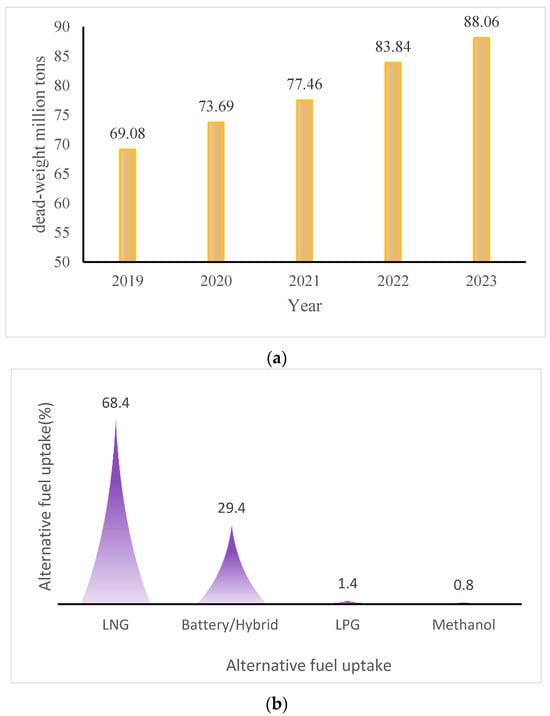
Figure 1
Open AccessArticle
Container Liner Shipping System Design Considering Methanol-Powered Vessels
by
Zhaokun Li, Xinke Yu, Jianning Shang, Kang Chen, Xu Xin, Wei Zhang and Shaoqiang Yu
J. Mar. Sci. Eng. 2025, 13(4), 709; https://doi.org/10.3390/jmse13040709 - 2 Apr 2025
Abstract
The transition from the use of heavy fuel oil (HFO) to the use of green fuels (e.g., methanol) for container liner shipping presents a significant challenge for liner shipping system design (LSSD) in terms of achieving emission reductions. While methanol, including both green
[...] Read more.
The transition from the use of heavy fuel oil (HFO) to the use of green fuels (e.g., methanol) for container liner shipping presents a significant challenge for liner shipping system design (LSSD) in terms of achieving emission reductions. While methanol, including both green and gray methanol, offers environmental benefits, its lower energy density introduces operational complexities. Motivated by the aforementioned background, we establish a bi-level programming model. This model integrates liner speed management and bunker fuel management strategies (i.e., bunkering port selection and bunkering amount determination) with traditional network design decision (i.e., fleet deployment, shipping network design, and slot allocation) optimization. Specifically, the upper-level model optimizes the number of liners deployed in the fleet and shipping network structure, whereas the lower-level model coordinates decisions associated with liner sailing speed management, bunker fuel management, and slot allocation. Moreover, we propose an adaptive piecewise linearization approach combined with a genetic algorithm, which can efficiently solve large-scale instances. Sensitivity analyses of fuel types and fuel prices are conducted to demonstrate the effectiveness of the model and algorithm. Overall, our paper offers valuable insights for policymakers in designing customized emission reduction policies to support the green fuel transition in the maritime industry.
Full article
(This article belongs to the Special Issue Advanced Research on the Sustainable Maritime Transportation (2nd Edition))
►▼
Show Figures

Figure 1
Open AccessArticle
Assessment of Heavy Metal Contamination and Ecological Risk in Mangrove Marine Sediments Inside and Outside Zhanjiang Bay: Implications for Conservation
by
Haoqiang Guo, Zhiguang Song, Sibo Wang, Suiqi Yan, Yaoping Wang, Yuan Gao and Jia Xia
J. Mar. Sci. Eng. 2025, 13(4), 708; https://doi.org/10.3390/jmse13040708 - 2 Apr 2025
Abstract
Mangrove ecosystems effectively sequester heavy metals, making their sediment distribution and ecological risk assessment vital for coastal protection. This study focuses on the mangrove forests on both sides of the Donghai Island embankment in Huguang Town, Zhanjiang Bay, analyzing the content, spatial distribution,
[...] Read more.
Mangrove ecosystems effectively sequester heavy metals, making their sediment distribution and ecological risk assessment vital for coastal protection. This study focuses on the mangrove forests on both sides of the Donghai Island embankment in Huguang Town, Zhanjiang Bay, analyzing the content, spatial distribution, and potential ecological risks of heavy metals (Cu, Zn, Cd, Pb, Cr, As, Hg) in surface and vertical sediment profiles through systematic sampling. The results show higher, more uniform heavy metal concentrations inside the bay, with Cd, Cr, and As showing significant accumulation, while outside, levels are lower but with Pb and As at sites like DW-Z-1 and DW-Z-4 nearing Class I Marine Sediment Quality Guideline limits. Vertically, concentrations inside the bay increase with depth due to long-term pollution, geoaccumulation and potential ecological risk indices, Cd emerges as the primary pollutant, posing a high risk (Er Class 3) inside the bay (RI Class 2) and a low to moderate risk outside. Pollution sources inside stem from industrial, urban, and aquaculture inputs, while tidal dynamics and mangroves pose purification mitigate risks outside. This study underscores Cd control needs and supports the ecological conservation of Zhanjiang Bay.
Full article
(This article belongs to the Section Marine Environmental Science)
►▼
Show Figures

Figure 1
Open AccessArticle
Rip Current Identification in Optical Images Using Wavelet Transform
by
Hsu-Min Wang, Dong-Jiing Doong and Jian-Wu Lai
J. Mar. Sci. Eng. 2025, 13(4), 707; https://doi.org/10.3390/jmse13040707 - 2 Apr 2025
Abstract
Rip currents are fast-moving, narrow channels of water that flow seaward from the shoreline, typically forming within the surf zone and extending beyond the wave-breaking region. These currents pose significant hazards to swimmers, contributing to numerous drowning incidents, especially with the increasing popularity
[...] Read more.
Rip currents are fast-moving, narrow channels of water that flow seaward from the shoreline, typically forming within the surf zone and extending beyond the wave-breaking region. These currents pose significant hazards to swimmers, contributing to numerous drowning incidents, especially with the increasing popularity of ocean recreation. Despite their prevalence, rip currents remain difficult to detect visually, and no universally reliable method exists for their identification by beachgoers. To address this challenge, this study presents a novel approach for detecting rip currents in optical images using wavelet-based edge detection and image convolution techniques. Five identification criteria were established based on previous literature and expert observations. The proposed program incorporates image augmentation, averaging, and frame aggregation to enhance generalization and accuracy. Experimental analysis involving four iterations and four wavelet bases demonstrated that using two iterations with the Daubechies wavelet yielded the highest interpretation accuracy (88.3%). Performance evaluation using a confusion matrix further confirmed an accuracy rate of 83.0%. The results indicate that the proposed method identifies rip currents in images, offering a valuable tool for researchers studying rip current patterns. This approach lays the groundwork for future advancements in rip current detection and related research.
Full article
(This article belongs to the Special Issue Storm Tide and Wave Simulations and Assessment, 3rd Edition)
►▼
Show Figures

Figure 1
Open AccessArticle
Research on the Hydroelasto-Plasticity Method and Its Application in Collapse Analyses of Ship Structures
by
Qingning Yuan, Zhiyong Pei and Ye Zhu
J. Mar. Sci. Eng. 2025, 13(4), 706; https://doi.org/10.3390/jmse13040706 - 1 Apr 2025
Abstract
The prevailing trend in marine engineering towards large-scale ship design inherently reduces structural rigidity, amplifying fluid–structure interaction effects during extreme wave loading scenarios. Conventional ultimate strength assessment frameworks fail to account for such dynamic coupling mechanisms. To address this critical limitation, this study
[...] Read more.
The prevailing trend in marine engineering towards large-scale ship design inherently reduces structural rigidity, amplifying fluid–structure interaction effects during extreme wave loading scenarios. Conventional ultimate strength assessment frameworks fail to account for such dynamic coupling mechanisms. To address this critical limitation, this study proposes a novel hydroelasto-plastic coupling framework and establishes time-dependent coupling equations governing fluid–structure interactions through systematic integration of the hydrodynamic principle and structural dynamics principle. Through a co-simulation approach combining computational fluid dynamics and finite element methods, the pressure and displacement boundary conditions at the fluid–structure interface are iteratively exchanged; thus, the time-domain solution of the coupling equations is obtained. A simplified box-type structure is analyzed to investigate its hydroelasto-plastic behavior and the mechanism of fluid–structure interaction. This research facilitates the elucidation of progressive collapse characteristics in ship hull structures under hydrodynamic loads, demonstrating significant implications for structural safety design.
Full article
(This article belongs to the Section Ocean Engineering)
►▼
Show Figures

Figure 1
Open AccessArticle
3D Heterogeneous Geological Model of Natural Gas Hydrates in Shenhu Area, South China Sea
by
Langfeng Mu, Dawang Liu, Yi Zhang, Hailong Lu and Shipeng Wei
J. Mar. Sci. Eng. 2025, 13(4), 705; https://doi.org/10.3390/jmse13040705 - 1 Apr 2025
Abstract
Natural gas hydrates, as a novel clean energy resource, have attracted widespread attention because of their highly complex reservoir properties, fluid distribution, and phase transitions. In particular, the fluid–solid interactions among hydrates, natural gas, water, and other multiphase components, along with phase state
[...] Read more.
Natural gas hydrates, as a novel clean energy resource, have attracted widespread attention because of their highly complex reservoir properties, fluid distribution, and phase transitions. In particular, the fluid–solid interactions among hydrates, natural gas, water, and other multiphase components, along with phase state transitions influenced by temperature and pressure and the dynamic reservoir responses induced by hydrate decomposition and synthesis, make their study unique. Consequently, accurately predicting the structure and reservoir properties of natural gas hydrates remains a scientific challenge. In this study, high-resolution 3D seismic data, well logging, and core samples from the Shenhu test area in the South China Sea were utilized for stratigraphic correlation and classification. The hydrate, three-phase mixed, and free gas layers were identified as distinct geological bodies, and detailed stratigraphic subdivisions were performed based on hydrate distribution and physical properties. By integrating stochastic and deterministic modeling approaches, a comprehensive hydrate reservoir model, along with temperature and pressure field models, was established. For the first time, a three-dimensional heterogeneous geological model of the hydrate reservoir was developed for the test exploitation area. This model provides a robust geological foundation for hydrate reservoir studies, numerical simulations, and the formulation of efficient exploitation strategies, contributing to the advancement of natural gas hydrate exploration and production.
Full article
(This article belongs to the Section Geological Oceanography)
►▼
Show Figures

Figure 1

Journal Menu
► ▼ Journal Menu-
- JMSE Home
- Aims & Scope
- Editorial Board
- Reviewer Board
- Topical Advisory Panel
- Instructions for Authors
- Special Issues
- Topics
- Sections
- Article Processing Charge
- Indexing & Archiving
- Editor’s Choice Articles
- Most Cited & Viewed
- Journal Statistics
- Journal History
- Journal Awards
- Society Collaborations
- Conferences
- Editorial Office
Journal Browser
► ▼ Journal BrowserHighly Accessed Articles
Latest Books
E-Mail Alert
News
Topics
Topic in
Energies, Fluids, JMSE, Sustainability, Water
Advances in Environmental Hydraulics
Topic Editors: Helena M. Ramos, Juan Antonio Rodríguez Díaz, Jorge MatosDeadline: 30 April 2025
Topic in
Applied Sciences, Inventions, JMSE, Oceans, Remote Sensing, Sensors
Ship Dynamics, Stability and Safety
Topic Editors: Zaojian Zou, Weilin LuoDeadline: 20 May 2025
Topic in
Atmosphere, JMSE, Sustainability, Water
Sustainable River and Lake Restoration: From Challenges to Solutions
Topic Editors: Yun Li, Hong Yang, Xiaogang Wang, Zhengxian Zhang, Boran ZhuDeadline: 1 June 2025
Topic in
Electricity, Electronics, Energies, Processes, Resources, WEVJ, JMSE
Advanced Operation, Control, and Planning of Intelligent Energy Systems
Topic Editors: Ziming Yan, Rui Wang, Chuan He, Tao Chen, Zhengmao LiDeadline: 31 July 2025

Conferences
Special Issues
Special Issue in
JMSE
Biodiversity and Population Ecology of Marine Invertebrates
Guest Editors: Alexios Lolas, Dimitris KlaoudatosDeadline: 5 April 2025
Special Issue in
JMSE
Advances in Underwater Acoustic Communication and Ocean Sensor Networks
Guest Editors: Huafeng Wu, Dezhi HanDeadline: 5 April 2025
Special Issue in
JMSE
Recent Advances in Maritime Safety and Ship Collision Avoidance
Guest Editors: Pengfei Chen, Junmin Mou, Lei DuDeadline: 5 April 2025
Special Issue in
JMSE
Application of CFD Numerical Modeling in Ocean and Coastal Engineering
Guest Editor: Kwangho LeeDeadline: 5 April 2025








